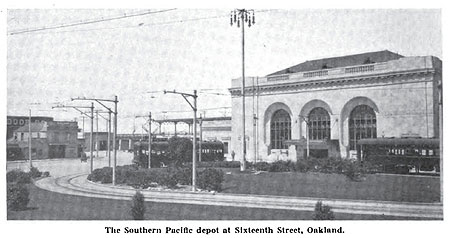
February 19, 1914
One Hundred Years Ago Today in Transportation...

In the years following the calamitous and still-notorious San Francisco earthquake in 1906, the Southern Pacific (SP) Railroad’s Sixteenth Street Station in Oakland gained ever-increasing importance for its role in helping to facilitate the renewed travel, growth, and business within that region of California. The station, noted as well for its Beaux-Arts Classical style, was completed and dedicated in 1912 and replaced an outdated wood-frame building that been around since 1870s.
While the new station began operations immediately, the results for its first couple of years of existence proved to be decidedly hectic and crowded with only the ground level open for service to accommodate all of the passengers traveling on various forms of transit – main-line trains, electric suburban trains, and streetcars. Those congestion challenges were considerably alleviated, and the impact of that station significantly optimized, with the opening of the station’s second level on Feb. 19, 1914.
Electric trains first rolled into that new level on that day—which would continue to do so for the next 26 years—and the availability of those new tracks proved to be a boon for the station’s overall viability and effectiveness. Within just a few years after that second level made its much needed debut, the Sixteenth Street Station was handling a grand total of 50 main line trains, 488 electric suburban trains, and 200 streetcars on a daily basis.
The opening of that second level 100 years ago therefore did much not only to help that station jump-start the prospects for that area in the post-earthquake period but also help spur the evolution of Oakland from a sleepy neighborhood in San Francisco’s shadow to a major city in its own right.












